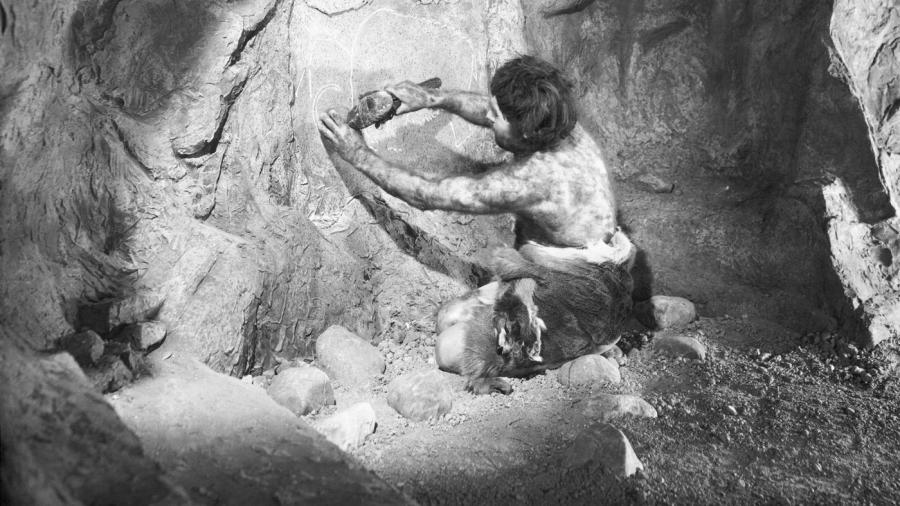What Did Cavemen Use to Make Paint?

Most prehistoric paints were made from minerals like hematite, iron and limonite that oxidize and combine to form a pigment called ochre. Charcoal, burned bones and ground calcite were also used. These materials were mixed with animal fat or other binding materials to form the paint.
Many pigments were created from various blends of oxidized iron and other minerals. Red and yellow ochre are examples commonly seen in prehistoric cave paintings. Prehistoric people mined these from the earth and probably traveled significant distances to get the right pigments. For example, the ochre used in the famous cave paintings at Lascaux probably came from 25 miles away. Ochre was highly valued and was used to color pottery and tools. Archaeologists believe that it had religious significance because it is often found in burials and at religious sites.
Clay may have been used as a binding agent in order to create crayon-like sticks, whereas liquids such as water and vegetable juice were used to create a thinner paint. Liquid paint was applied using fingers, natural materials like lichen or horsehair brushes. Another common technique was blowing paint through a hollow bone to create a spray. This was often blown over hands to create an outline or used to color large areas.





